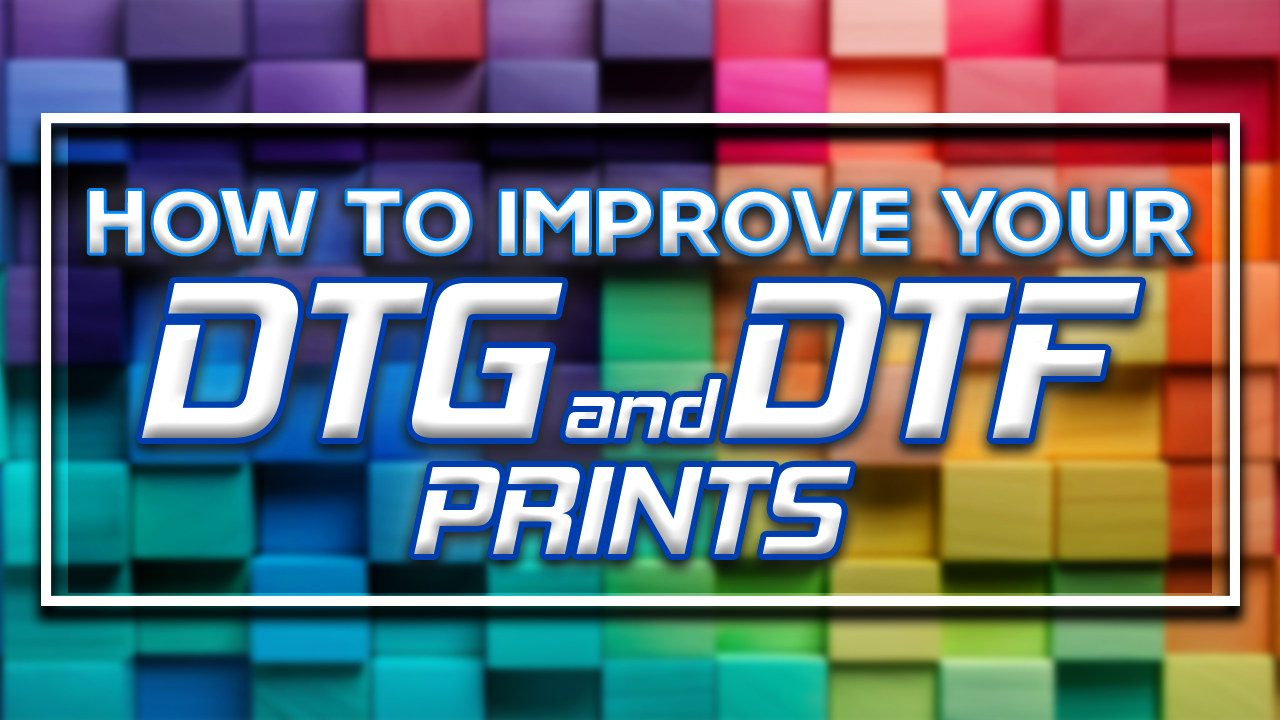MOVE ON AND IMPROVE!
How to improve your dtg & dtf prints

"There’s always room for improvement."
Tech talk time for Direct to Garment AND Direct to Film. Before we start talking about improving our colors, let me start by saying with a good machine that is well-maintained and using the right ink, we can achieve great prints as is. With our instructions and guidelines, we have seen tremendous success and brilliant color prints across our two favorite mediums: DTG and DTF. With that being said, just because something works does not mean it cannot be improved, which is why today we are going over some easy ways to improve color accuracy and print quality with your equipment.
Color Charts
There may come a time when you land a big account that has high expectations for the work you are contracted to do - like matching a certain shade of red for a corporate logo, for example. What are we supposed to do when things are just a little off? The quick answer would be color charts. If you are trying to match a certain shade of RED, the first thing I would do is print a color chart with different shades of RED. From here, we can find the best match, take the corresponding color code, and then plug that into the print job. Certain shades of GREEN, MAGENTA, PINK, and PURPLE can be difficult to reproduce using CMYKW ink, but with a color chart, we can narrow things down if the standard settings aren’t working. TEST, TEST, TEST, as I like to say in our YouTube videos.
Resolution
Not talking about the fake promise you made to yourself last month, resolution refers to the image quality and size of the print file. Measured in dots per inch (or DPI), resolution is paramount to getting a good print. While JPGs are generally acceptable (NOT PREFERRED), a screenshot is a big no-no. For reference, most web images are in the neighborhood of 72 dpi, which is not passable. BAD. 200 dpi? It may work for some smaller-scale prints, but your absolute minimum should be 300 dpi. More dots per inch, more quality artwork and images. The best printer in the world won’t be able to do its job properly with low-resolution artwork. The above details are important to keep in mind when exporting or working with a graphic designer.
Color Modes
To that last point, consider your process. When you or your artist are arranging artwork, what are you looking at? A computer screen. What does the screen display in? RGB. Are we PRINTING in RGB? NO. DTG and DTF utilize CMYK, so prepare your artwork in this mode for best results. The best way to solve a problem is to prevent it before it becomes a problem, and setting your artwork up for success with the right print mode can go a long way.
RIP Software
Depending on your printer of choice, upgrading the RIP program that talks to your machine from the computer can help. Standard RIPs can get the job done, but especially when it comes to direct-to-film printing, it helps to have software that has unique printing options based on the ink or ESPECIALLY the film being used. Seeing as all films are created differently, working with the ink layering for that specific media can bring out the best quality.
Meet our author
Estevan Romero
Brand Marketing Lead
Esteven Romero began making YouTube videos back in 2017 to help new business owners learn how to use their products and grow their operation.
He has been featured in many companies content such as Siser North America, Key Print Co and more. He has been featured as a speaker/presenter nationwide across the tradeshow circuit sharing information and insight to the print community audience and brings 13+ years of experience to the table.
You can meet Estevan and more of the friendly All American Print Supply Co team by visiting the company live events calendar and our YouTube channel.





